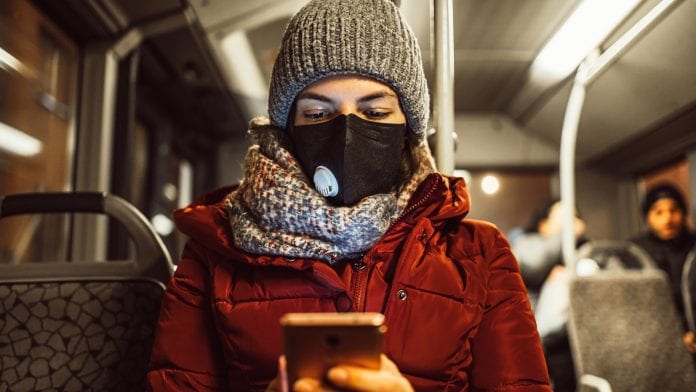
Winter weather conditions could cause a higher risk of COVID-19 infection according to an epidemiological expert.
The winter weather condition of low humidity could cause an increase in COVID-19 community transmission according to two studies carried out by Professor Michael Ward, an epidemiologist in the Sydney School of Veterinary Science at the University of Sydney.
“This second study adds to a growing body of evidence that humidity is a key factor in the spread of COVID-19,” Professor Ward said.
The study has been published in Transboundary and Emerging Diseases.
Low-humidity causes higher risk of COVID-19 transmission
Lower humidity, which can be defined as ‘dryer air’, can cause a two-fold increase in COVID-19 infections for a 10% drop in humidity, according to the research. There are biological reasons why this is the case, says Ward.
“Dry air appears to favour the spread of COVID-19, meaning time and place become important,” he said. “Accumulating evidence shows that climate is a factor in COVID-19 spread, raising the prospect of seasonal disease outbreaks.
“When the humidity is lower, the air is drier and it makes the aerosols smaller. When you sneeze and cough those smaller infectious aerosols can stay suspended in the air for longer. That increases the exposure for other people. When the air is humid and the aerosols are larger and heavier, they fall and hit surfaces quicker.
“This suggests the need for people to wear a mask, both to prevent infectious aerosols escaping into the air in the case of an infectious individual and exposure to infectious aerosols in the case of an uninfected individual,” Professor Ward said.
COVID-19: a seasonal illness
The initial study, carried out by Ward and two researchers from partner institution Fudan University School of Public Health in Shanghai, China, was conducted in Sydney during the early stages of the pandemic and found an association between lower humidity and an increase in locally acquired positive cases.
“COVID-19 is likely to be a seasonal disease that recurs in periods of lower humidity. We need to be thinking if it’s wintertime, it could be COVID-19 time. The pandemic in China, Europe, and North America happened in winter so we were interested to see if the association between COVID-19 cases and the climate was different in Australia in late summer and early autumn.
“When it comes to climate, we found that lower humidity is the main driver here, rather than colder temperatures,” Professor Ward said. “It means we may see an increased risk in winter here when we have a drop in humidity. But in the northern hemisphere, in areas with lower humidity or during periods when the humidity drops, there might be a risk even during the summer months.
“This means we need to be careful coming into a dry winter,” Professor Ward said, adding that the average humidity in Sydney is lowest in August.
“Even though the cases of COVID-19 have gone down in Australia, we still need to be vigilant and public health systems need to be aware of potentially increased risk when we are in a period of low humidity. Ongoing testing and surveillance remain critical as we enter the winter months, when conditions may favour coronavirus spread.”











I heard no mention of the fact that an environment with drier air contributes to drying of the mucous membranes, making them susceptible to infection as the mucous provides a protective layer against bacteria, viruses and other contaminants for epithelial cells, also trapping these contaminants and carrying them away. A significant fact that can be addressed with a humidifier.